Queenright Queen Rearing Using the Ben Harden System
A talk via Zoom by David Evans
Presented as the joint winter meeting of West Dorset and East Devon branches by Somerset Beekeepers via the Eventbrite portal. 396 attendees.
David Evans has been keeping bees for 15 years. He was formally Professor of Virology at the University of St Andrews where he worked on control of honey bee viruses (DWV and CBPV). He currently runs c20 colonies and is interested in queen rearing and stock improvement. He is a member of Lochaber BKA at Ardnamurchan on the west coast of Scotland, where the bees are currently Varroa-free.
This talk aims to help explain ‘active’ queen rearing and introduce the basic conditions under which new queens are produced in the colony. Along the way David will describe the small amount of specialised kit needed for grafting and discuss the use of nucleus colonies for queen mating. The talk is intended mainly for hobbyist beekeepers with a few years experience and 2-5 colonies.
Passive and active queen rearing
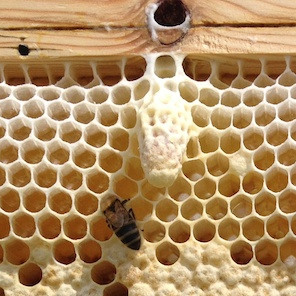
Passive queen rearing refers to situations such as re-queening during swarm control or using naturally produced swarm cells for increase in nucleus colonies. In these situations, the bees dictate the timing, provenance and quantity of new queens.
Active queen rearing allows the beekeeper to choose their best colony for donating larvae at a time that suits them. Docility, disease resistance, honey production, etc, can all be improved in this way.
David warned that there are hundreds of queen rearing methods described but cautions that, for beginners, it is desirable to learn one method well and avoid complicated techniques.
Queens reared in a normal hive
New queens are predominantly produced in the early part of the season, with plenty of drones available, a good nectar flow, and possibly a crowded colony with an aging queen. Under these conditions the queen mandibular and footprint pheromones will be reduced. The aim of the Ben Harden method is to reproduce these conditions.
The Ben Harden method
With queenright queen rearing the queen is present throughout the operation. The method can be used with a single colony and a minimum of additional equipment. Thus, there are no interruptions of the honey flow and no significant colony manipulations. A similar method has been used by the National Bee Unit (see references at the end).
Overview
Prepare the colony by:
- Add a second brood box
- Reduce the volume of upper box
- Encourage lots of young bees into the upper box
- Add suitable larvae to the upper box
- Monitor queen cell development
- Remove queen cells when mature (14 days after egg laying)
David’s list of what you need
- A spare brood box
- Queen cups and a cell bar frame
- Two fat dummies
- A grafting tool (e.g., small paint brush)
- Nuc box(es) for queen mating
- Good eyesight
- Good weather
- Good record keeping (score traits desirable to you)
The ‘bad boys’
David advised culling drone brood from aggressive colonies where ever possible in the area.
Cell bar frame with the Nicot system of cell cups (David’s preferred way)
A cell bar frame is easily and cheaply made from a standard frame with additional cross bar(s) attached. To the cross bars pin the brown mount (using frame nails). The cream coloured cup holder is pressed onto the mount and a small brown cup pressed into the cup holder. When the new queen cells are capped, a plastic cage can be fitted over them to avoid the first queen to emerge killing all the other queens. It helps if the bottom bar can pivot for easy access.
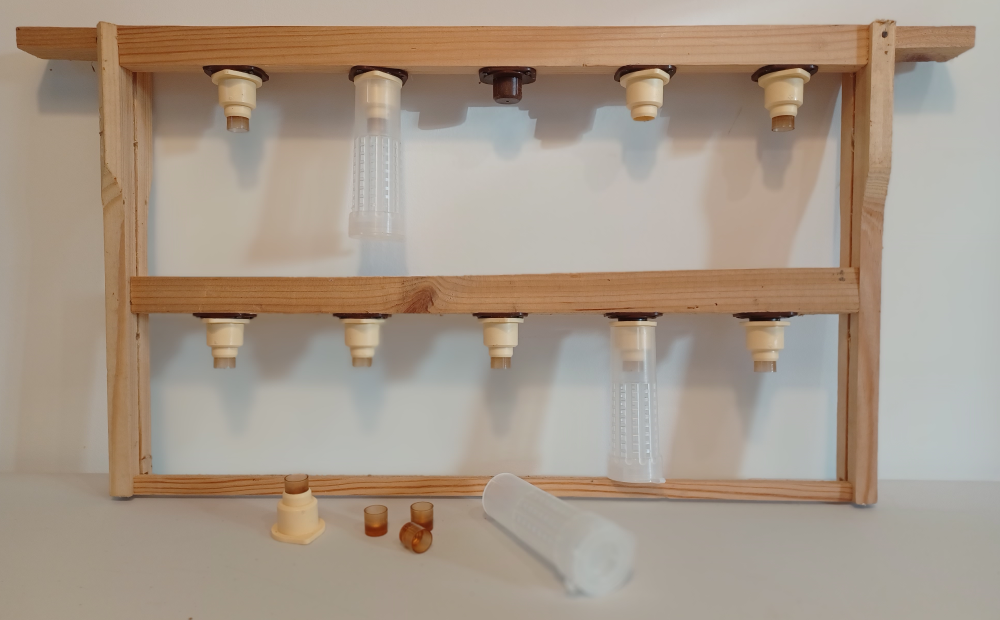
Fat dummies
Easily made from correx plastic sheet cut to size and taped together or use old frame parts and thin plywood nailed together. The idea is to leave space in the top box for just 4 frames in the middle (see Ben Harden setup).
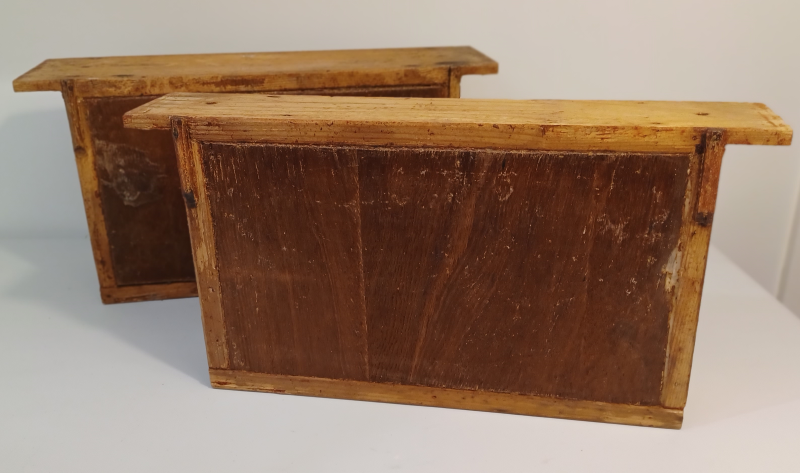
Grafting tool
You will be transferring 1 day old larvae from the donor hive frame to your cell bar frame. The larvae are about the size of an apostrophe. There are many different grafting tools you can buy, but the easiest for beginners to master is the 00 or 000 paint brush, usually with sable bristles. The soft bristles are far less likely to damage the larvae.

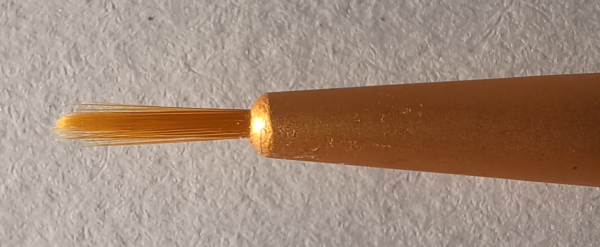
Hints and Tips
A head torch improves visibility and leaves your hands free.
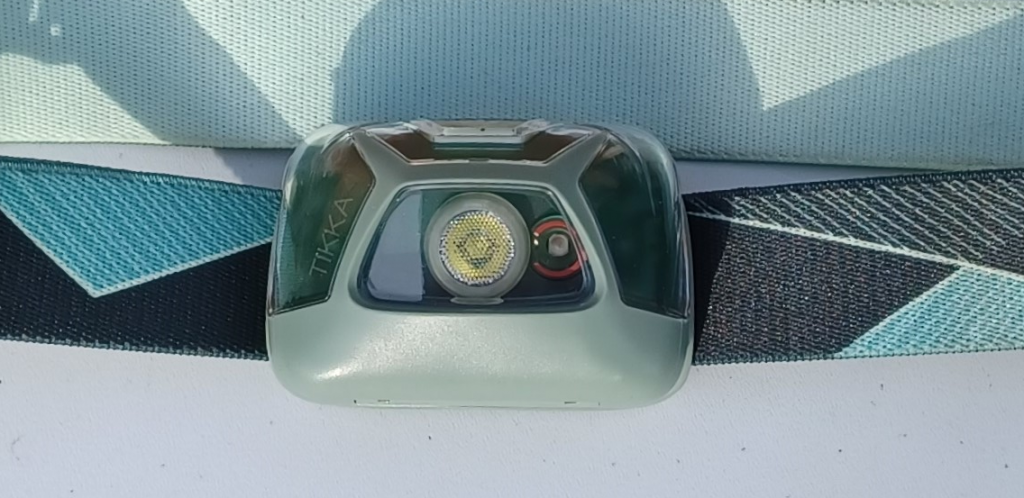
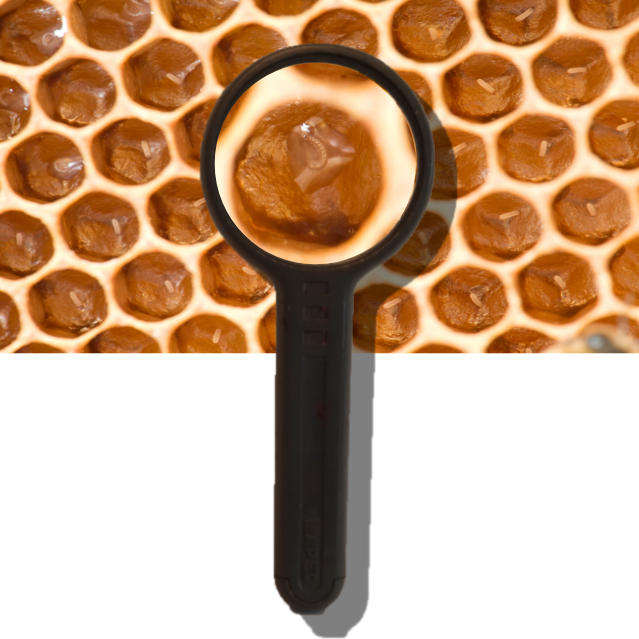
Make sure you can see the larvae. Use a magnifier if necessary.
Preparation and Planning Schedule
- Select the colonies for a) cell raising (quality irrelevant), and b) the larva source colony (quality important). These could be the same colony.
- 24-48 hours before grafting, set up the Ben Harden system to acclimatise the cell bar frame in the cell builder colony.
- Graft.
- Check for cell starting after 24 hours.
- ~10 days later use the new queen cells.
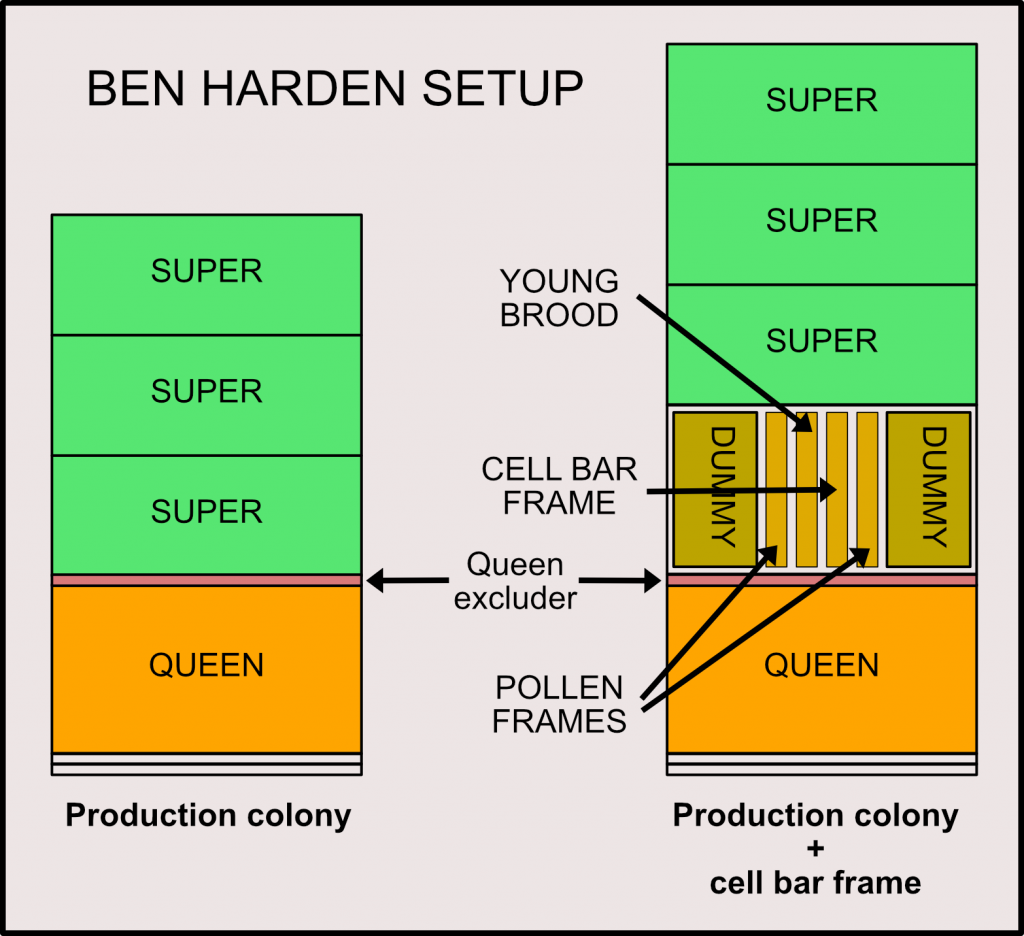
Grafting – It’s much easier than you think!
Before actually grafting, you MUST check the brood frames in the top box for queen cells. Destroy them all.
The general principles are to transfer very young larvae without damaging them, chilling them or allowing them to dry out. So, select larvae adjacent to eggs (likely to be very young larvae), and keep grafts warm and moist by covering with a damp cloth.
A quick check 1-2 days after grafting will show if you have been successful. If not, simply try again.
The queens will ideally have been grafted on day 4 from egg laying, in which case they will emerge on day 12 from grafting. Make sure the cages are in place before emergence.
Queen mating
As we all know, successful queen mating requires reasonable weather; warm, sunny and only a gentle breeze. Your options are to add a cell to a full sized colony, a nucleus colony or a mini-nuc. In all cases the recipient colony needs to be queenless. Which ever type of colony you use, they can be left alone for 2 weeks or more before checking for a laying queen.
David did not recommend beginners using mini-nucs as they require some skill to manage successfully.
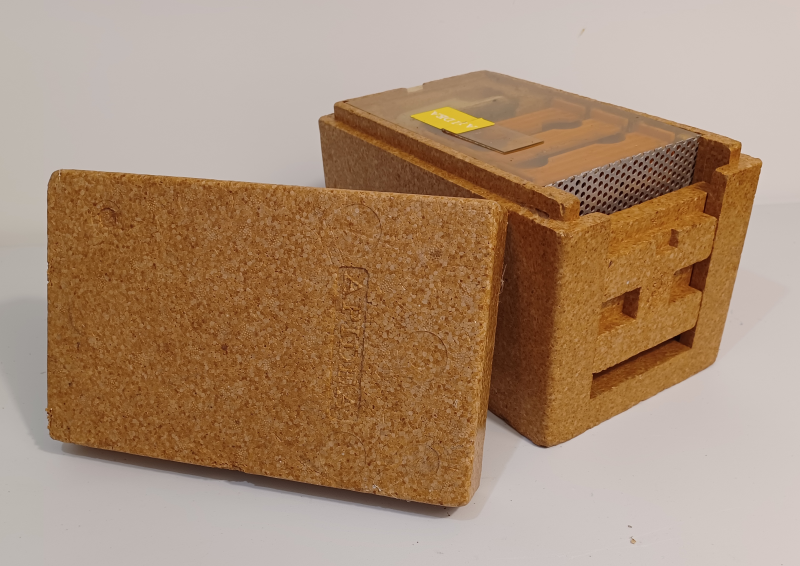
To add your new queen cell to the hive or nuc, remove the cage and pull the cup holder from your cell bar frame. Gently press the cup holder and queen cell into a small depression on the face of the comb above emerging brood, and close up the hive. You need to be patient!
It’s as simple as that!
Further reading
A simple method of raising queen cells – Ben Harden, Nutshell #59, Northern Bee Books.
Rearing queen honey bees in a queenright colony – David Wilkinson and Mike Brown, American Bee Journal, January, 2002 (http://bit.ly/LrD4qJ )
Visit David’s website: www.theapiarist.org